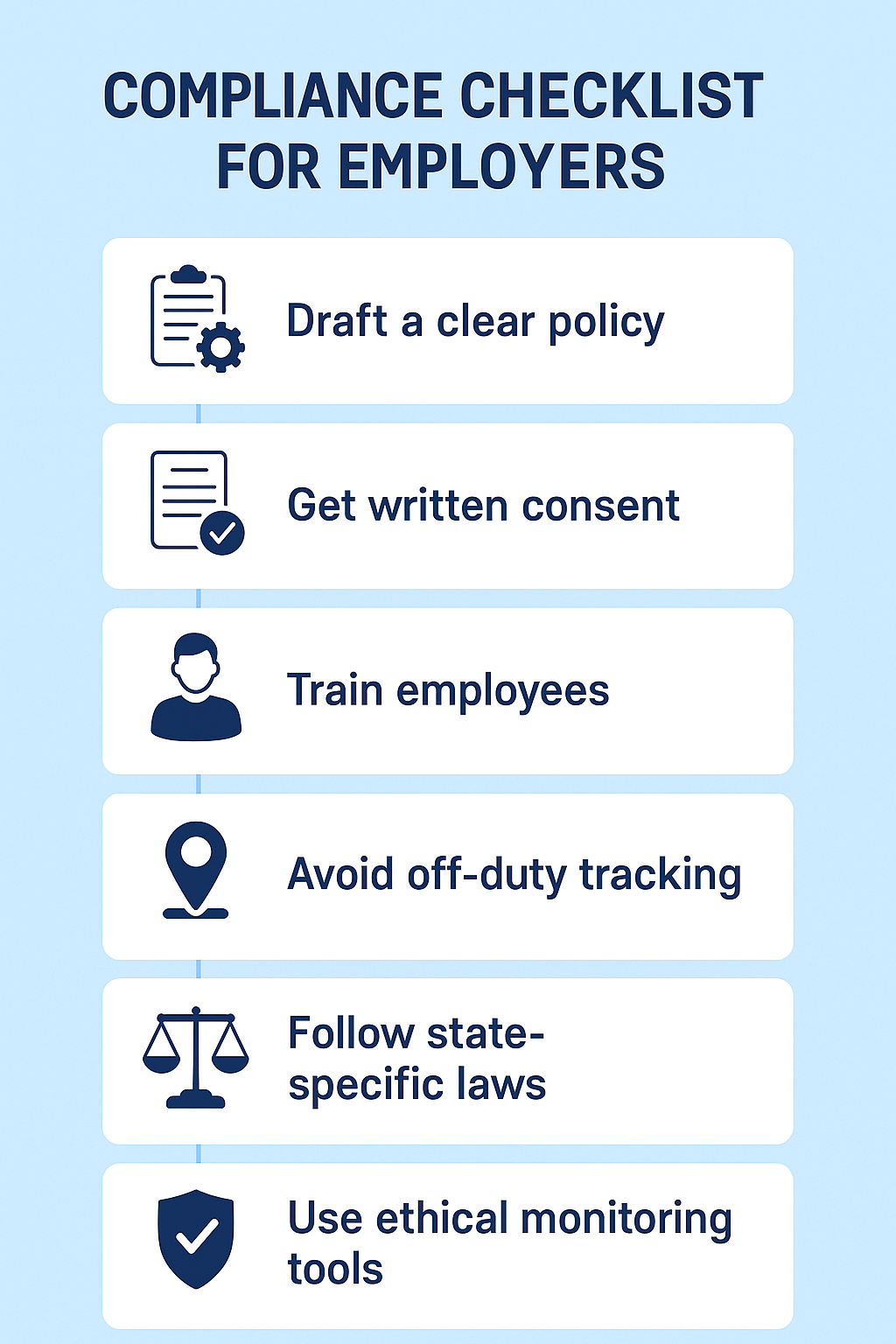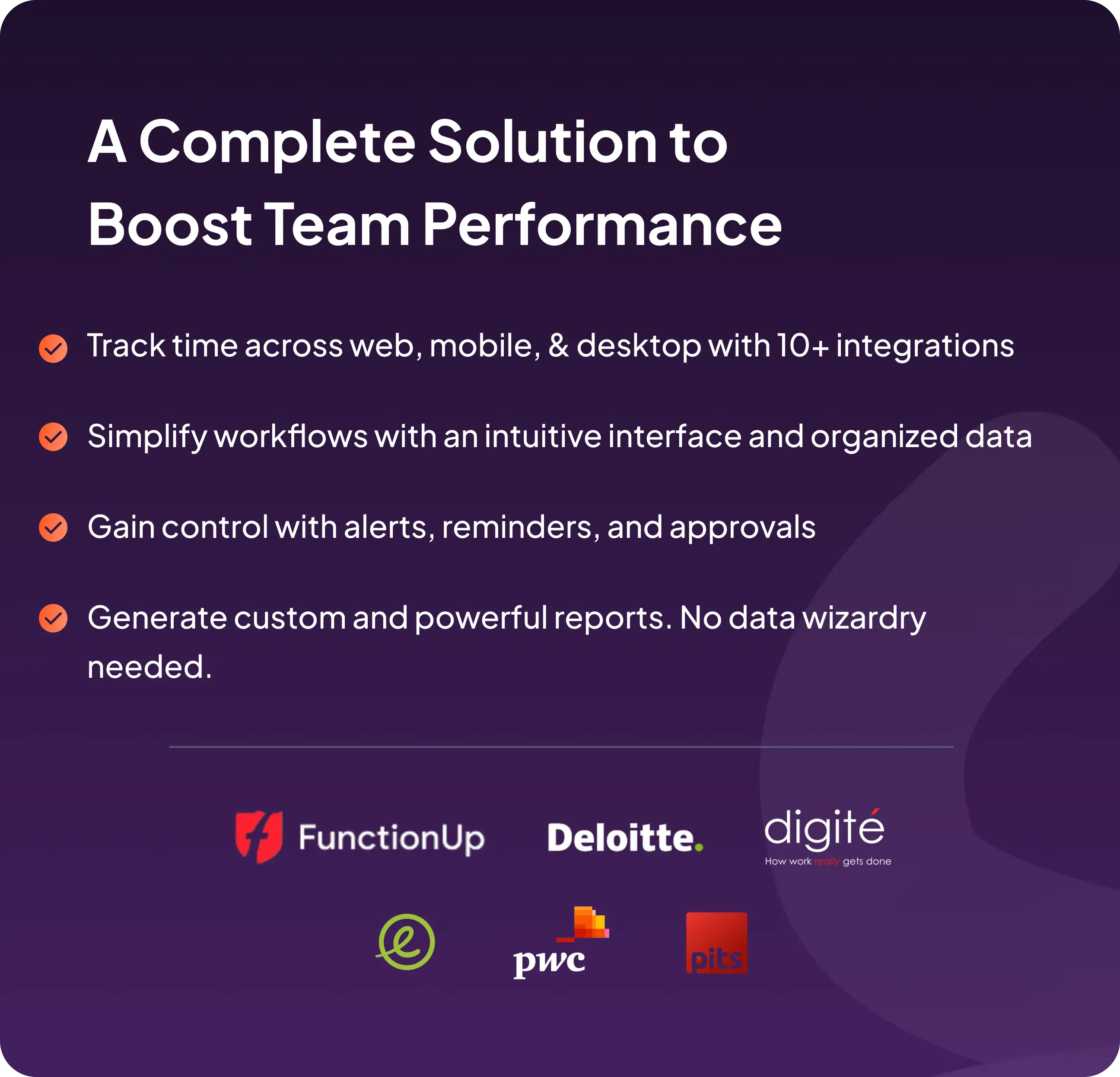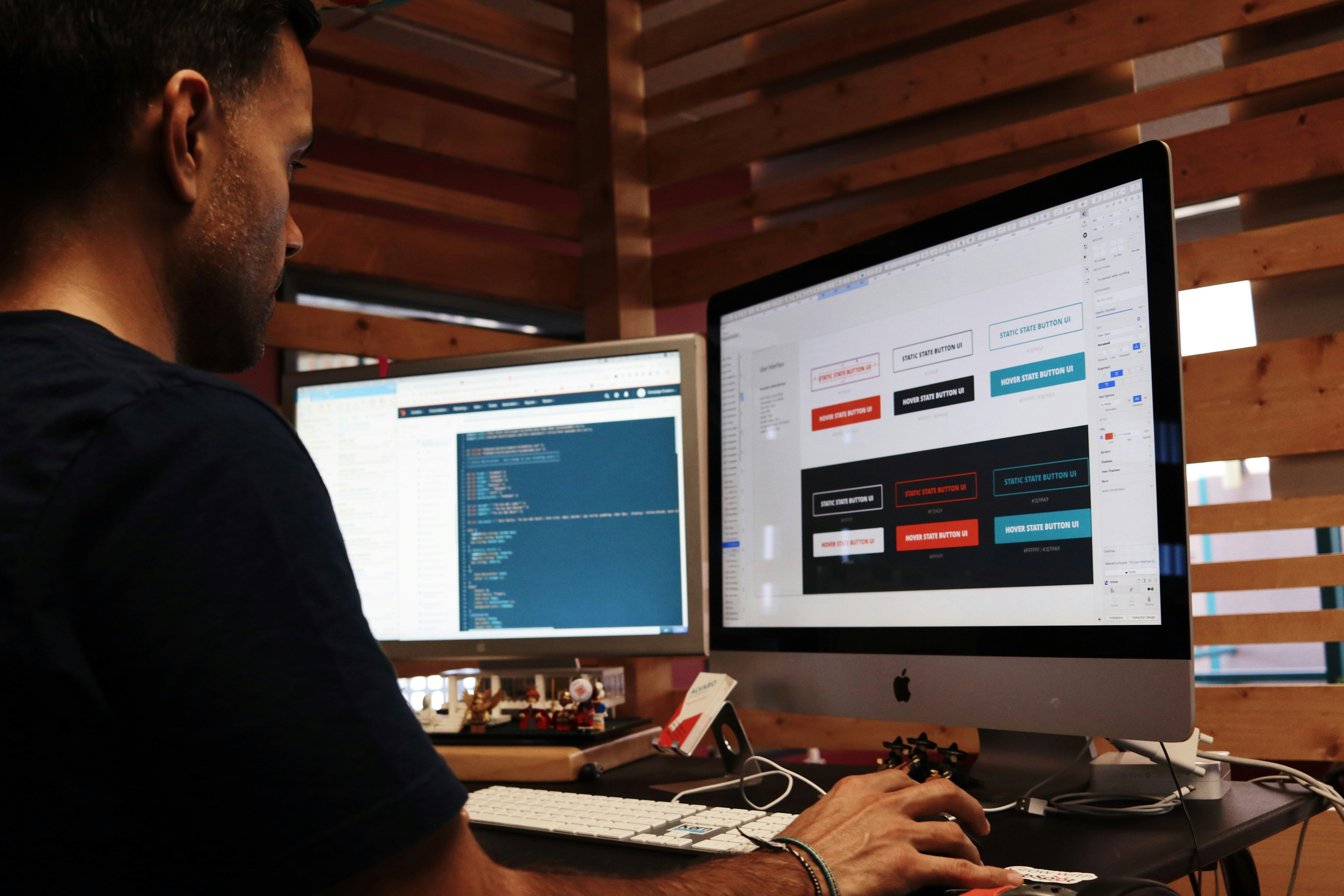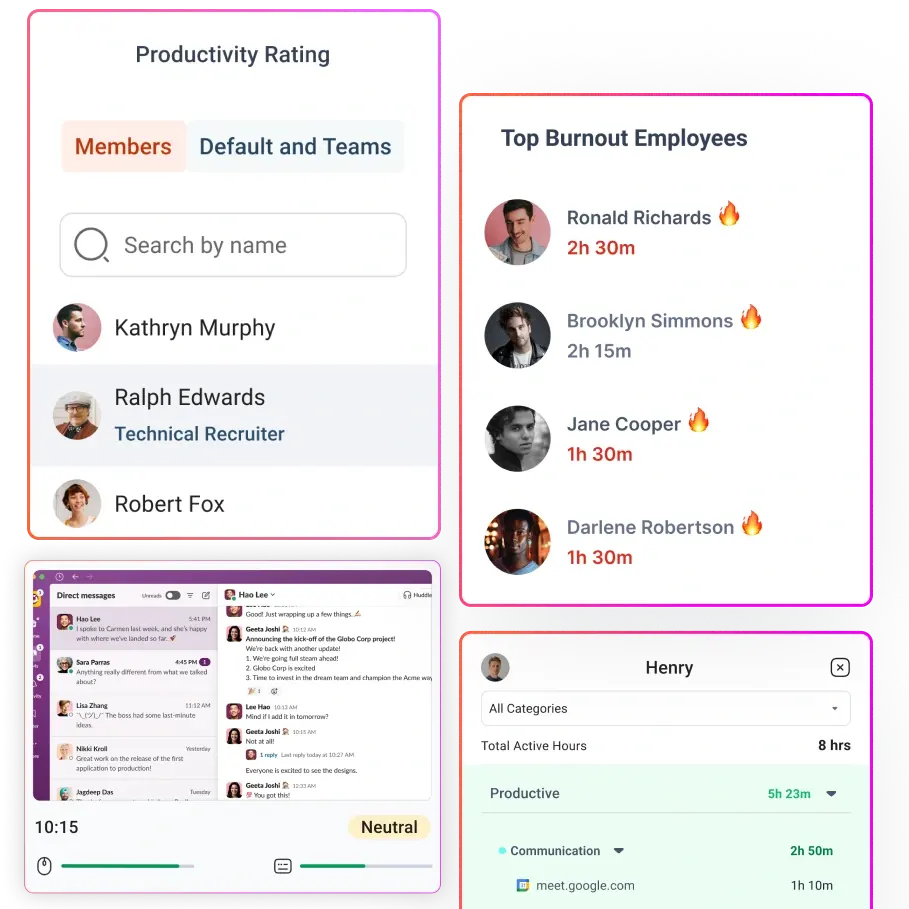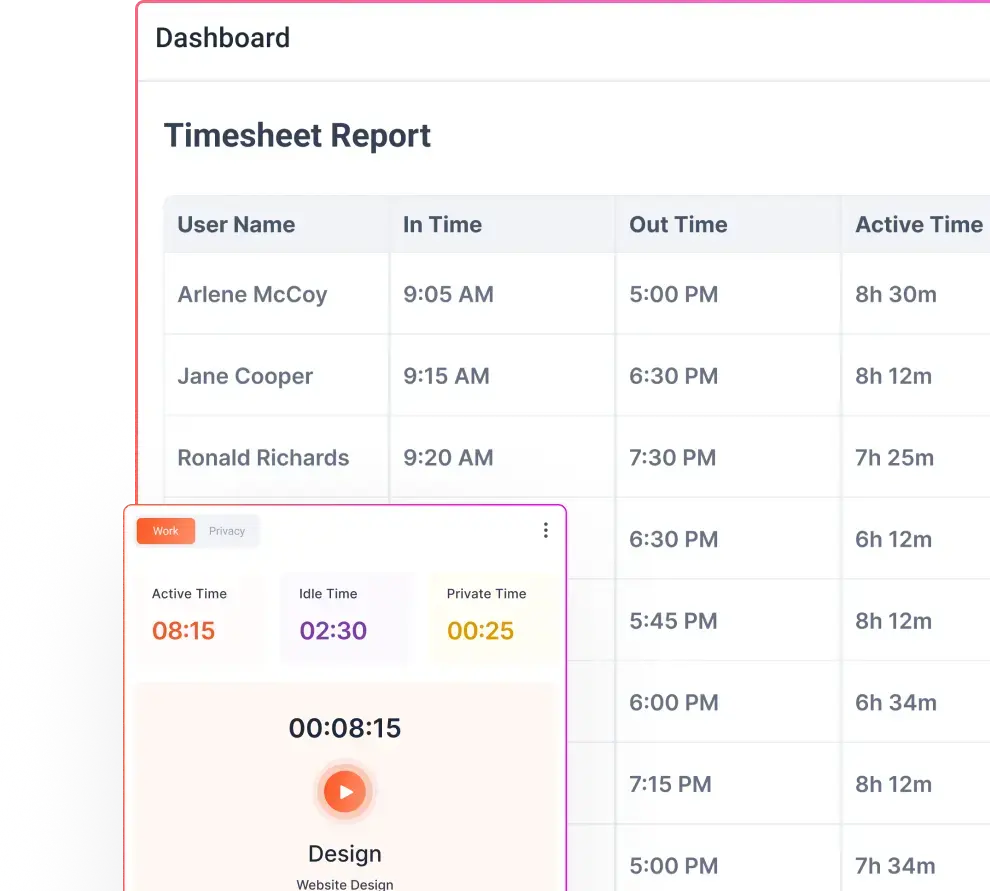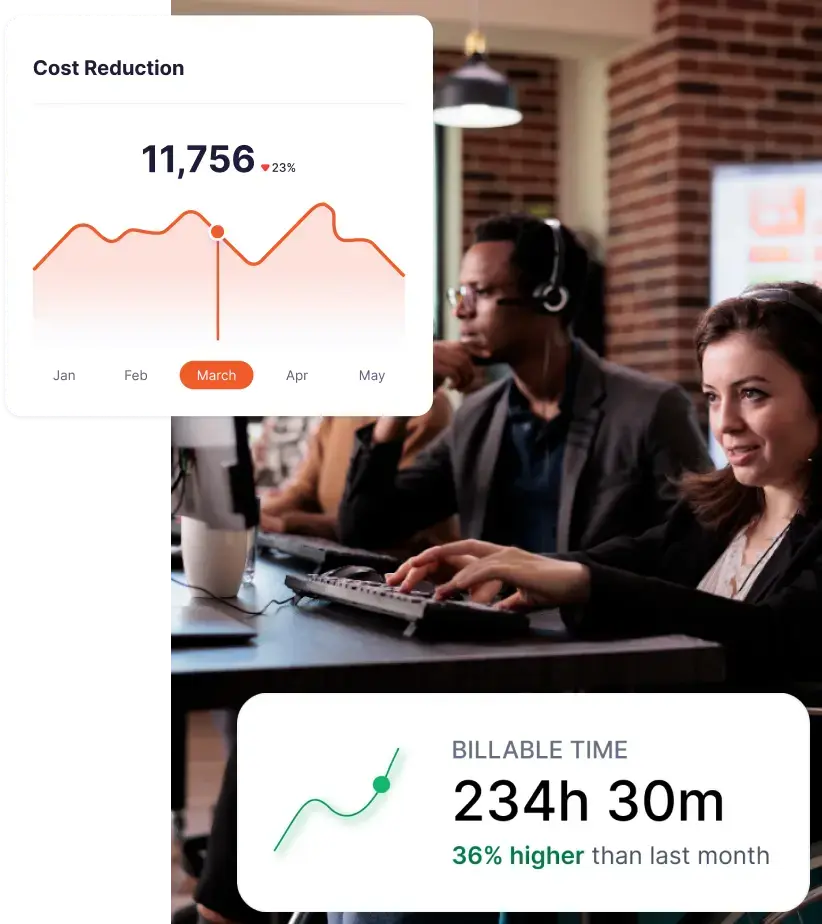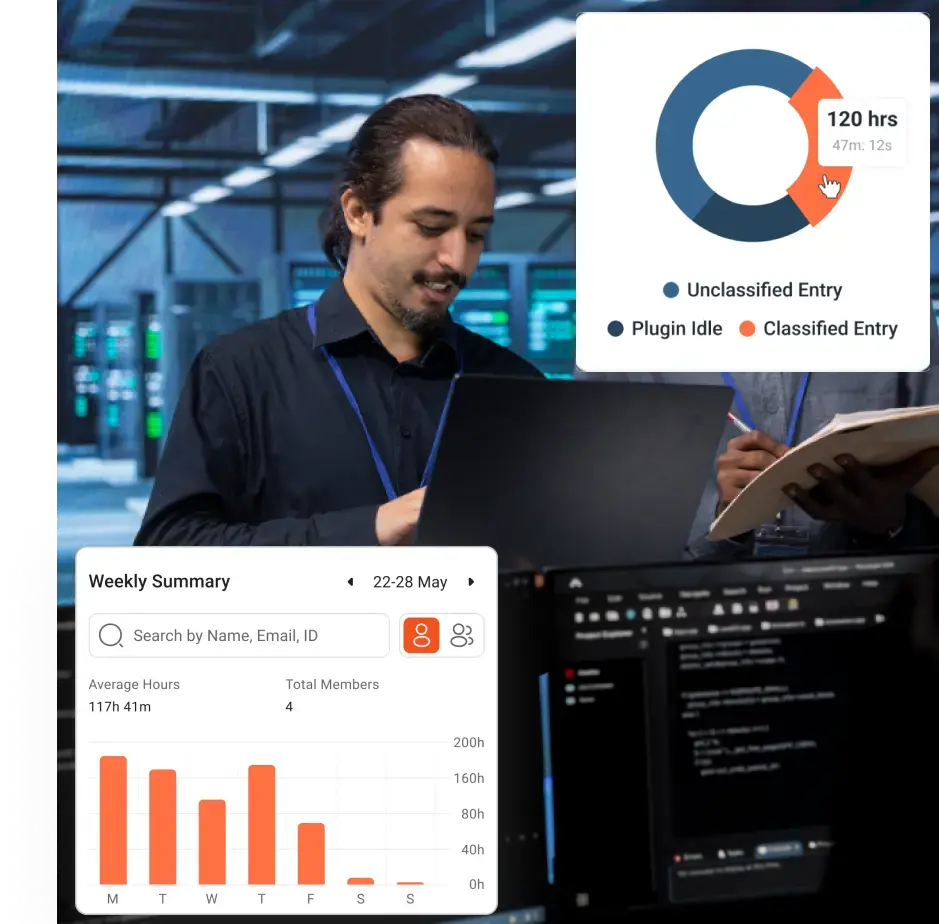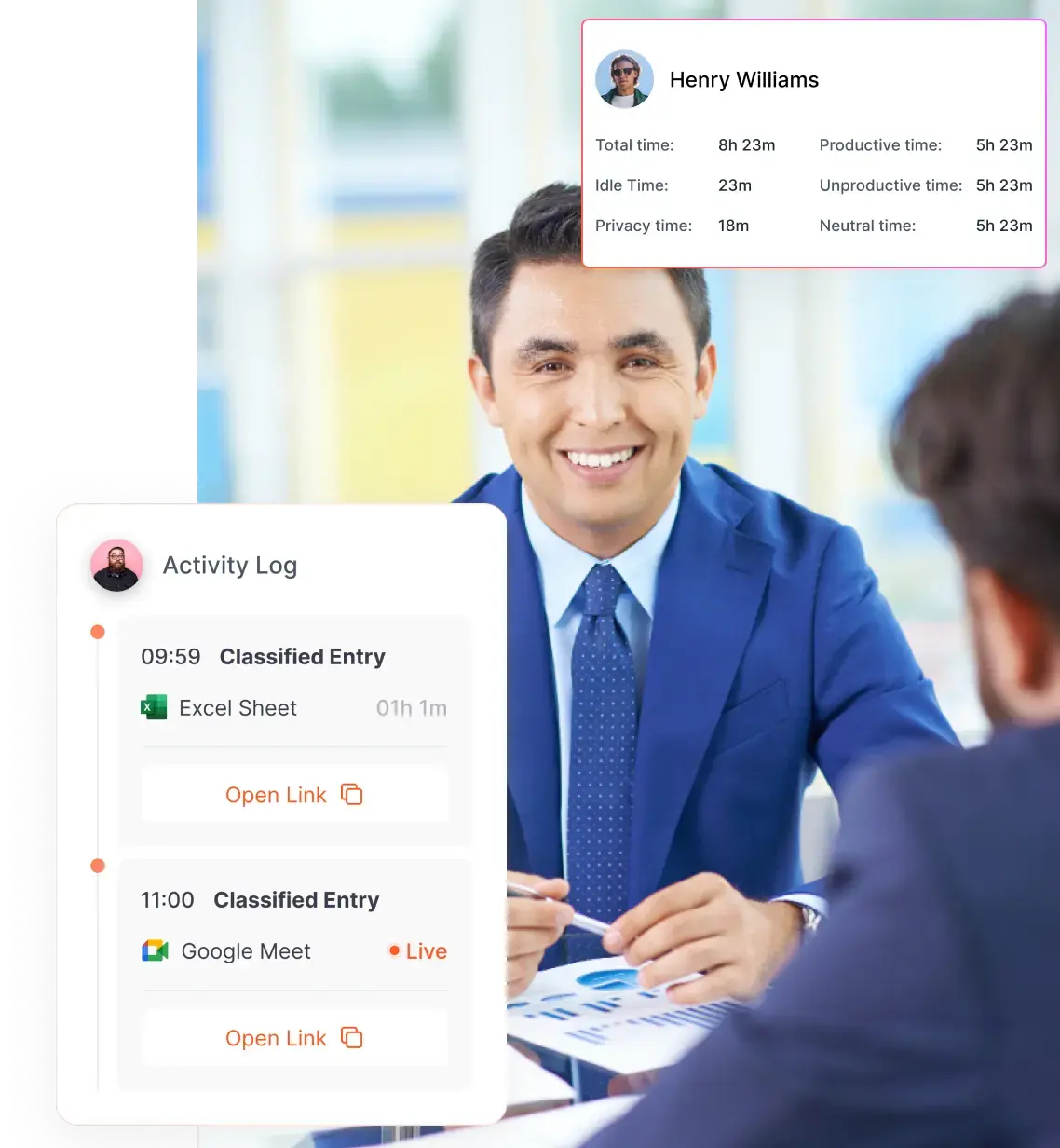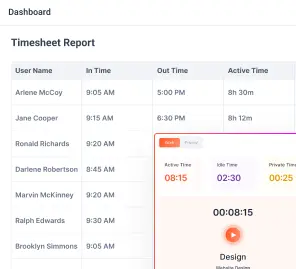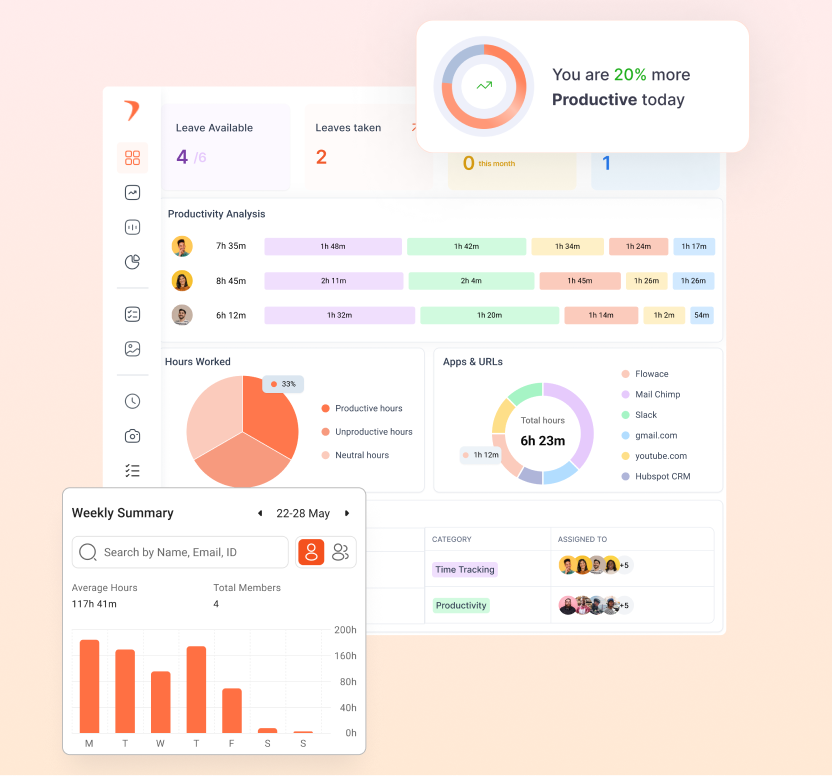Key Takeaways:
- The employee monitoring software market is growing fast, expected to reach $7.61 billion by 2029 due to AI tools, cybersecurity threats, and rising compliance needs.
- There’s no single federal law for employee monitoring; instead, employers must follow a mix of federal regulations like ECPA, SCA, and NLRA, along with stricter state-specific laws.
- Consent laws vary widely. Some states require only one person to consent to monitoring, while others need all parties to agree, especially for call recordings.
- California has the strongest privacy laws in the U.S. Employers must give notice, obtain consent, and allow employees to access or delete their data.
- Not all monitoring is allowed. Tracking off-duty activities, using hidden cameras, or accessing personal social media accounts can be illegal or highly restricted.
- Employers should use best practices like clear policies, employee consent, secure data storage, and transparent communication to stay compliant.
- Flowace simplifies compliance by offering features like consent prompts, privacy settings, audit trails, and ethical monitoring tools.
Employee monitoring has become pervasive in the modern workplace. And it’s only going to grow from here. The market for employee monitoring software is expected to hit $7.61 billion by 2029, with an annual growth rate of 18.1%. This surge is being driven by smarter AI-powered tools, rising cybersecurity threats, and stricter compliance demands.
That’s why it’s so important to understand employee monitoring laws. Monitoring without proper compliance can lead to hefty fines and lawsuits. If you’re an HR manager, legal advisor, business owner, or part of the compliance team, you need to know the rules.
What Is Employee Monitoring?
Employee monitoring refers to monitoring what employees do during work hours. It is usually done through a monitoring software. There are several types of employee monitoring. It includes checking emails, logging keystrokes, recording calls, tracking website and app use, GPS tracking, or even video surveillance. Common monitoring tools range from time-tracking and screenshot software to CCTV cameras and badge entry systems.
However, employee monitoring also falls under workplace surveillance regulations and privacy laws. Hence, the scope of what an employer can or cannot monitor is limited by legal boundaries.
Federal Legal Framework
U.S. law does not have a single, unified statute called “the employee monitoring law.” Instead, a patchwork of federal laws provides the baseline. The state laws build an additional layer of protection. At the federal level, the key frameworks include:
Electronic Communications Privacy Act (ECPA)
The Electronic Communications Privacy Act of 1986 (ECPA) is the primary federal law governing interception of communications. It generally prohibits the intentional interception of wire, oral, or electronic communications (like phone calls, emails, instant messages) unless an exception applies.
In the workplace context, two major exceptions usually permit employer monitoring:
- Business Use Exception (Ordinary Course of Business): You’re allowed to monitor employee communications if it’s for a valid business reason and done as part of daily operations using company-provided tools. For example, you can review customer service calls for training or scan emails to check for malware.
- Consent Exception: Monitoring is also legal if one person involved gives consent. Under federal law, that can be the employee. If your team signs an ethical employee monitoring policy or sees a banner notice and continues using the system, that counts as consent.
Stored Communications Act (SCA)
The Stored Communications Act protects the privacy of communications stored on computers and networks. For example, emails or messages that are saved on a server. In general, the SCA makes it unlawful to access stored electronic communications without authorization.
However, the SCA includes exceptions relevant to employers. An employer may access communications stored on its own systems if done in line with its policies, and the employee is notified.
For example, reviewing emails sent through a company’s Microsoft Outlook server is generally permissible if employees have been told their company email is subject to monitoring.
National Labor Relations Act (NLRA)
Even though it’s not a privacy law, the National Labor Relations Act (NLRA) sets limits on how you can monitor employees. It protects their right to talk about wages, working conditions, or unionizing, even if they don’t belong to a union.
For instance, section 7 of the NLRA allows employees to join together and speak up about workplace issues. The law has also ruled that spying on employees’ personal emails or social media to see who’s discussing unions is an unfair labor practice. So, if your monitoring interferes with these rights, it could be considered illegal.
When drafting monitoring policies, include a disclaimer that nothing in the policy is intended to restrict employees from legally protected activities.
Other Federal Laws
Beyond ECPA, SCA, and NLRA, several other federal laws touch on workplace monitoring:
- Anti-Discrimination Laws: You can’t monitor employees in a way that unfairly targets or singles out certain groups. If monitoring reveals sensitive information (like a health issue), you must handle it carefully to avoid violating anti-discrimination laws like the ADA.
- Privacy and Constitutional Rights: Private employees generally don’t have constitutional privacy rights at work, but public sector employees do. If you’re a government employer, your monitoring must be reasonable and not overly invasive.
- State Privacy Protections: Some states (like California) provide extra privacy rights through their constitutions. These rights can impact how private companies monitor their employees, especially around personal content.
- OSHA and Workplace Safety: Monitoring tools, especially audio or video, must not violate health and safety laws. Recording private health-related conversations could breach HIPAA or OSHA rules in certain workplaces.
- Computer Fraud and Abuse Act (CFAA): You’re allowed to monitor your own company systems, but accessing someone else’s device or account without permission could violate the CFAA. Always stick to monitoring within your network and authorized devices.
State and Local Requirements
State laws vary widely in how they regulate employee monitoring laws, adding to the confusion caused by employee monitoring myths. It’s essential to know the rules in each state where you operate and where your employees are located. Below, we highlight some key state-level requirements:
Notice and Consent States (Connecticut, Delaware, New York)
Only a handful of states explicitly require employers to give employees notice or obtain consent for electronic monitoring. Currently, Connecticut, Delaware, and New York are notable for their e-monitoring laws.
| State | Electronic Monitoring Notice Requirements | Consent Requirements |
| Connecticut | Must give prior written notice to employees before any electronic monitoring. Typically satisfied via a posted policy or written acknowledgement. Exceptions for investigations of wrongdoing exist. | Employee consent not explicitly required by statute (notice suffices). However, for telephone calls, Connecticut law requires all-party consent to record the call (one-party consent for in-person conversations, but all parties for calls). |
| Delaware | Must provide notice before monitoring telephone, email, internet usage of employees. Can be a one-time written notice (signed by employee) or electronic notice each use (e.g. daily logon banner). | Consent via acknowledgement of notice is effectively required (especially for one-time notice option, which must be signed). For phone calls, Delaware is an all-party consent state for recordings. |
| New York | Must give written notice at hire of monitoring of phone, email, internet, and obtain employee’s signed acknowledgment. Also must post a continuous notice in a conspicuous place. | No additional consent needed beyond the signed acknowledgment at hire. New York is a one-party consent state for call recordings (only one party needs to consent). |
| California | No general statute requiring employee monitoring disclosure. However, under the CCPA/CPRA, employers must give employees notice at collection of personal data (which can include monitoring data). Employees have rights to know, delete, etc., their personal information. | California is an all-party consent state for recording confidential conversations (Cal. Penal Code § 632) – so all parties must consent to record calls or meetings. For other monitoring, consent is recommended as part of CCPA notice and best practice. |
| Texas | No specific state law requiring notice of electronic monitoring of employees. (Employers in TX should still have a clear policy to avoid privacy tort claims.) | Texas is a one-party consent state for call recording – only one participant needs to consent (e.g. the employer can consent on its behalf). No state law mandates employee consent for general monitoring. |
Always check the latest in each state, because laws are evolving.
One-Party vs. All-Party Consent (Call Recording Laws)
When it comes to audio monitoring or recording calls, state laws diverge into two camps: one-party consent and all-party (two-party) consent. These laws aren’t specific to employment, but they critically apply when employers record telephone calls or even Zoom meetings that include audio.
| Consent Type | Description | Example |
| One-Party Consent | Only one participant in the conversation needs to consent to the recording. | An employee records a customer call after playing a message: “This call may be recorded.” |
| The recorder can be the consenting party themselves. | No explicit customer response is needed if they continue the call after the disclaimer. | |
| All-Party Consent | Everyone involved in the conversation must give clear consent before recording can take place. | A company must inform all participants and receive verbal or written agreement from everyone. |
| Recording without full consent is illegal in these jurisdictions. | Secretly recording a meeting in an all-party state may lead to fines or criminal penalties. |
If your call involves people from different states, always follow the law of the state with the strictest rules. For example, if you’re in New York (a one-party consent state) and you’re speaking to someone in California (an all-party consent state), it’s safest to get everyone’s permission before recording. California law requires all parties to agree, so it’s better to play it safe.
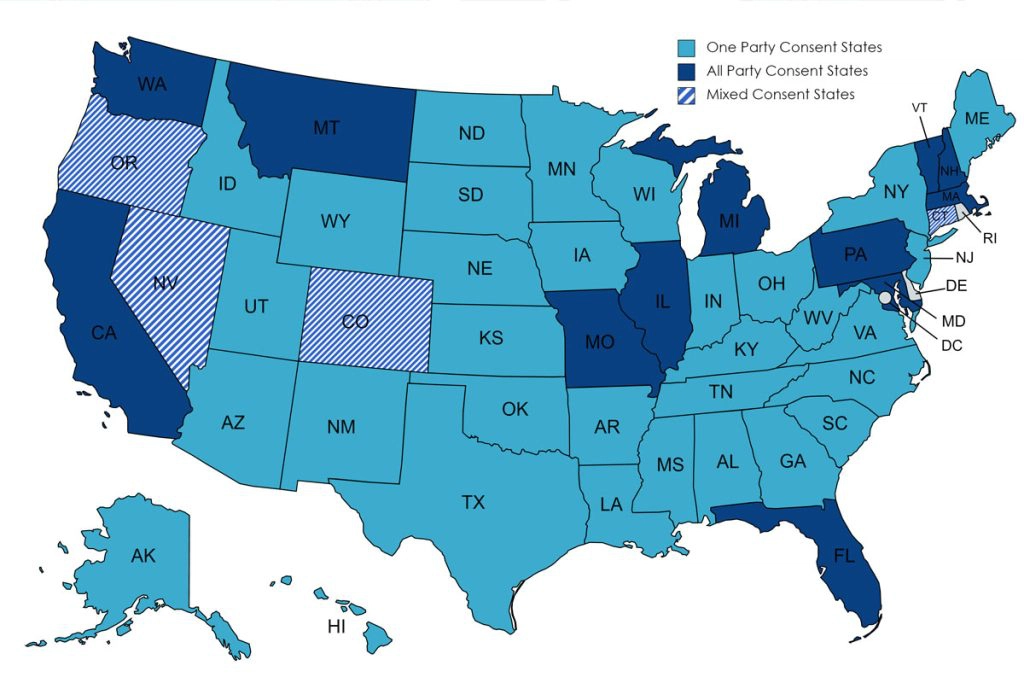
Source: recordinglaw.com
Many companies avoid legal trouble by simply letting everyone know the call is being recorded, no matter where they’re located. It’s a smart and respectful habit to build.
California Privacy Laws (CCPA, CPRA, CalECPA)
California deserves special mention not only because of its all-party consent rule for recordings, but because it has some of the most robust privacy protections in the U.S.
| Law / Regulation | Scope | Employer Obligations | Employee Rights |
| CCPA & CPRA
(California Consumer Privacy Act & California Privacy Rights Act) |
Applies to businesses with $25M+ revenue or those handling large volumes of personal data. | – Provide notice at time of data collection
– Disclose categories of data collected and purposes – Ensure reasonable data security – Monitor only with proper notice |
– Right to know, access, and delete data
– Right to opt-out of certain data uses – Right to sue for security breaches of sensitive data |
| CalECPA
(California Electronic Communications Privacy Act) |
Restricts government access to electronic communication data. | – Not directly applicable to private employers
– Government employers cannot compel access to personal accounts without legal process |
– Protection from government intrusion into personal digital communications (relevant for public employees) |
| California Labor Code § 980
(Social Media Privacy) |
Regulates employer access to employees’ personal social media accounts. | – Cannot request or demand social media login credentials
– Cannot retaliate against employees for refusal |
– Right to maintain privacy of personal social media
– Freedom from employer coercion to share login info |
| Biometric Data & Surveillance Guidelines | Covers biometric data under CPRA’s “sensitive personal information” category. | – Provide explicit notice and obtain consent before collecting biometric data
– Avoid punitive action based on off-duty behavior unless job-related |
– Right to informed consent for biometric data
– Protection from wrongful termination based on off-duty monitoring |
California’s employee monitoring laws emphasize employee privacy rights and consent. So, California employers should be extremely transparent and cautious with any form of monitoring.
Other Notable State Laws (Texas, Washington, and Emerging Regulations)
Beyond the states already discussed, a few other state laws and trends deserve attention:
| State / Law | Key Requirements | Employer Takeaways |
| Texas
CUBI Act |
Consent required before collecting biometric data (e.g. fingerprints). | Use signed consent forms for biometric time clocks. |
| GPS tracking without consent is a misdemeanor (except on company-owned vehicles). | Notify employees even if tracking company vehicles. | |
| One-party consent state for call recording. | OK to record calls internally, but check other states’ laws for interstate calls. | |
| Washington
Wiretap Law (RCW 9.73) |
All-party consent required for recording calls or conversations. | Must get full consent before recording any workplace audio. |
| No general monitoring law, but strong privacy culture. | Transparency is key — disclose monitoring policies to employees. | |
| Seattle mandates ride-share firms disclose monitoring to drivers. | Watch for city-level rules, especially in metro areas. | |
| Illinois
BIPA |
Written notice, policy, and consent required for biometric data use. | Strictest U.S. biometric law — no compliance means lawsuits. |
| Non-compliance can result in large fines and lawsuits. | Never collect biometric data without full compliance. | |
| Emerging Trends
Nationwide Shift |
Maryland requires notice if AI is used to monitor workers (Oct 2022). | Disclose any AI-based monitoring clearly and early. |
| Colorado, NJ, MA, PA exploring new workplace privacy rules. | Regularly check for legal updates in your state. | |
| NLRB may limit excessive surveillance at the federal level. | Avoid intrusive or hidden monitoring practices. |
Another important law to notice is the City ordinances. A few large cities have considered rules around electronic monitoring. For instance, New York City has an AI hiring law (requiring bias audits of automated decision tools) which, while not a monitoring law, shows cities’ interest in regulating workplace tech.
Types of Monitoring & Legal Limits
Employee monitoring can take many forms. It’s important to understand the legal limits and best practices for each type, as laws and expectations can differ for each one.
Computer and Network Monitoring
You can track work activity on company-owned devices, like emails, websites, keystrokes, and downloads, if it’s for valid business reasons and disclosed through a clear policy. But don’t access personal accounts or over-collect data without employee consent.
Phone and Call Recording
It’s legal to monitor business calls and phone usage, but you must follow federal and state consent laws. Always inform employees and customers if a call is being recorded, and avoid recording clearly personal conversations.
Video Surveillance
You can place cameras in public work areas, but never in private spaces like restrooms or changing rooms. Use video without audio to avoid extra legal hurdles, and post clear notices to maintain transparency.
GPS & Location Tracking
Tracking company vehicles and devices is allowed during work hours, but tracking personal ones requires written consent. Avoid off-duty surveillance to prevent violating privacy rights.
Social Media & Personal Accounts
Never ask for passwords or access to private social media. Monitoring public content is allowed, but don’t act on protected speech or lawful off-duty conduct. Stick to reviewing work-related content, and be cautious with personal communications and background checks.
Best Practices for Compliance & Ethics
Creating a legally compliant employee monitoring program requires clear policies and transparent communication. Some of the best practices to implement are:
- Drafting Clear Policies: Create a straightforward monitoring policy that lists what will be tracked, how, and why. Explain privacy boundaries, outline data retention, and reassure employees that it aligns with legal standards.
- Obtaining Consent: Get clear, written consent from employees. Use signed forms or electronic acknowledgments, especially in states that require explicit approval.
- Minimizing Intrusiveness: Only monitor what’s necessary for business goals. Avoid tracking outside work hours or personal areas, and review if certain monitoring can be reduced or removed.
- Employee Communication & Training: Explain monitoring during onboarding and in regular updates. Create open channels for questions and reinforce how monitoring protects both the company and the team.
- Data Security & Retention: Store monitoring data securely with limited access. Use audit trails, define how long data is retained, and make sure it’s only used for legitimate purposes.
Compliance Doesn’t Have to Be Hard – Flowace Has You Covered
Implementing all these compliance steps might sound daunting. Especially if you are a busy HR or managing an IT team. This is where Flowace can help.
Flowace is an AI-powered employee productivity and time-tracking solution – and it’s built with compliance and transparency in mind, so you can monitor work efficiently while respecting privacy and legal requirements.
How can Flowace support your employee monitoring compliance?
- Built-In Consent & Notifications: Flowace displays custom consent prompts during onboarding and logs user acceptance, helping you meet legal notice and consent requirements in states like Connecticut, Delaware, and New York.
- Customizable Privacy Settings: You can control what gets monitored based on local laws, disable features like screenshots in stricter states, and set “no-monitoring” hours to protect employee privacy during off-duty times.
- Data Security & Retention by Design: Flowace encrypts all data, restricts admin access, and lets you set automatic deletion timelines to stay compliant with data minimization and retention laws.
- Consent for Remote Work Monitoring: Flowace allows remote workers to view their own tracking data, promoting transparency and trust, while also logging break times and paused sessions for accountability.
- Compliance Reports and Audit Trails: The platform provides audit logs and downloadable reports to prove consent, data handling, and retention compliance in case of legal reviews or audits.
- Policy Integration: Flowace can display real-time reminders for workplace policies, such as USB usage restrictions, making it easier for employees to follow rules without feeling micromanaged.
- Ethical Monitoring by Default: Flowace avoids invasive tactics and focuses on productivity metrics and workflow insights, reinforcing that monitoring is meant to support employees.
Final Thoughts
To sum it up, employee monitoring laws are a shield to protect employee privacy and not an obstacle to monitoring.
By staying informed and honest with your team, you avoid legal trouble and build trust. When people know what’s being tracked and why, they’re more likely to support it. Monitoring doesn’t have to feel like spying. Done right, it can actually make your workplace stronger.
Don’t risk legal trouble. See how Flowace keeps you compliant and in control. Book a free demo with Flowace now.









































